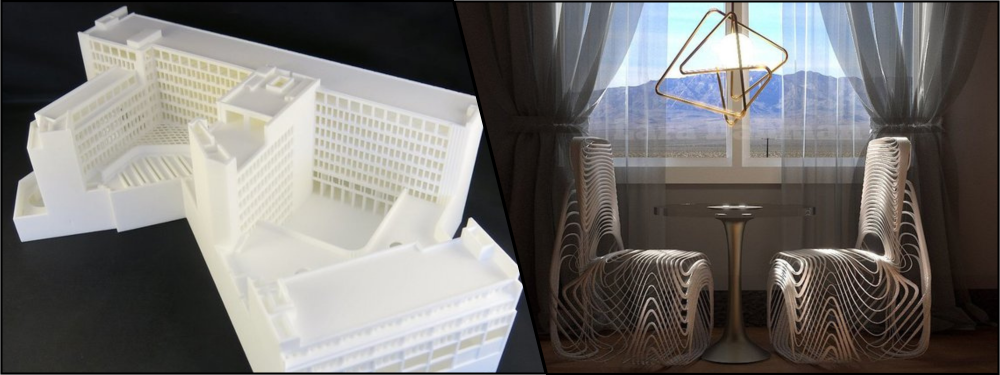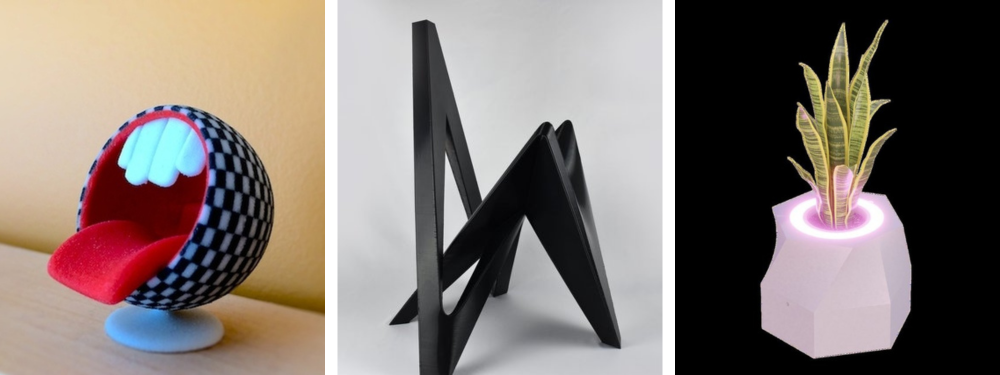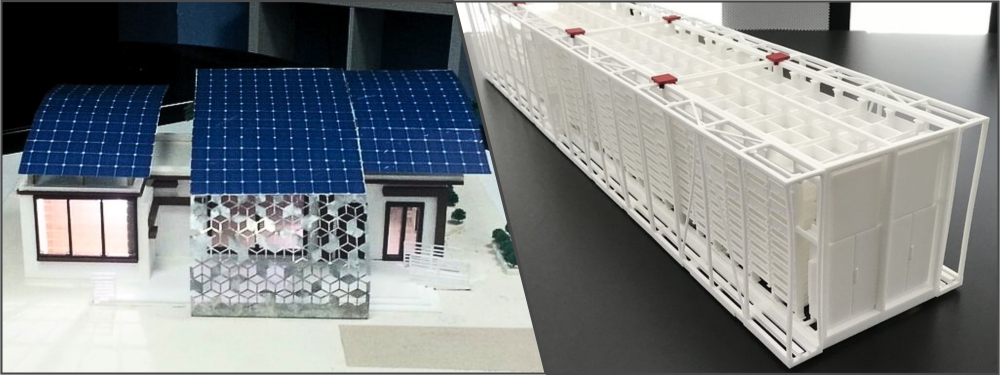3D printing, commonly referred to as additive manufacturing, is a process that transforms digital 3D models into physical objects by building them up one layer at a time. Initially invented in the 1980s, 3D printing has become increasingly integrated into everyday life, mainly interior and architectural design. Explore how interior design companies utilize 3D printed solutions to enhance and innovate within architectural spaces.
Defining 3D printing
Although using software for home product designs is not new, the emergence of 3D printing has significantly transformed the interior design industry. This innovation enables the conversion of digital designs into tangible, custom-made objects. With advanced 3D printers, designers can produce a wide range of products from 3D models, achieving impressive accuracy and customization.
3D printing distinguishes itself from conventional manufacturing methods through its additive process, in which objects are constructed by depositing material layer by layer. This technique enables the creation of highly customized products precisely tailored to meet the unique needs of individual customers. For example, people with non-standard leg lengths can enjoy custom bed frames, furniture, and other home items tailored to their unique measurements, increasing their comfort.
The 3D design or modeling phase is a crucial component of the additive manufacturing process, requiring careful attention before sending the model to the printer. Once the design is finalized, the appropriate material composition must be selected for printing. Common materials used in 3D printing for interior design applications include:
- Bio-Polyamides, based on Plant Oils
- Cement
- Coffee
- Dirt
- Plastic Resins
- Recycled Rubber
- Salt
- Sand
3D printing also enables the usage of sustainable materials in production as long as they have been rigorously tested and approved for the end product. The potential to use materials sourced from construction waste streams in 3D printing contributes to the circular economy. It promotes eco-friendly practices in manufacturing, simultaneously allowing for repurposing waste materials and reducing environmental impact while creating highly customized products. In this way, 3D printing enables the creation of products that are not only highly customized but also environmentally conscious.
RELATED: 3D Printed Threads and Screws: Innovative Product Design Options for Companies
How is 3D printing used in interior design?
While 3D printing is commonly linked to sizable projects in industries like aerospace, military, and manufacturing, its success and affordability have paved the way for its use in home décor and furnishings. Custom interior products, including 3D-printed items, are becoming increasingly accessible to consumers. Many home furnishing retailers and manufacturers now provide options for customers to design 3D printed or other custom items tailored to their preferences.
Traditional custom manufacturing methods are still in use, but 3D printed and personalized furnishings have gained popularity among consumers seeking uniqueness and avoiding mass-produced goods for their homes.
In terms of customization, 3D printing has had the most significant impact, offering the capability to create intricate, one-of-a-kind home furnishings and interior design elements that genuinely cater to individual tastes and preferences.

Benefits of 3D printing services in interior design
The interior design industry is highly competitive, with clients accessing an extensive array of options for each project. In such a dynamic landscape, interior design firms face the challenge of distinguishing themselves from competitors and capturing the attention of potential clients. Firms must prioritize creativity and innovation in their design approach to achieve success and secure future projects.
One way interior design firms can stay ahead and thrive in this competitive market is by harnessing the potential of 3D printing technology. Utilizing 3D printed solutions offers many benefits that can elevate the design process, enhance customization, and provide clients with unique and cutting-edge designs.
By integrating 3D printing into their practice, interior design firms can showcase their adaptability to modern technology, deliver exceptional design outcomes, and position themselves as industry leaders. In a field where differentiation is crucial, adopting 3D printing can be a game-changer, helping firms stand out from the crowd and achieve continued growth.
- Create several copies with 3D printing
With the help of 3D printing, it has become possible for interior design companies to generate several versions of the final production model conveniently. The 3D-printed online image can also be stored for a long time for possible reference purposes in the future.
This ability to quickly create several copies is impossible with conventional methods of building 3D models. It allows interior designers to present a scale model replica of their products to partners and customers alike.
- Creative freedom with 3D printing
3D printing technology has revolutionized the field of interior design by offering unparalleled creative freedom. Designers can now explore and experiment with designs without being constrained by traditional manufacturing limitations. With 3D printing, designers can craft unique furniture pieces and interior structures with innovative patterns and designs.
The technology combines various materials, creating novel textures and functionalities in custom-made pieces. The creative possibilities of 3D printing extend beyond furniture.
Designers can experiment with new forms and morphologies for various decorative elements, including facades, flooring, lighting fixtures, wall paneling, and bathroom accessories. These elements can be tailored to serve decorative and functional purposes in interior spaces.
3D printing, especially when utilizing 3D printed components, has revolutionized interior design by unlocking creative possibilities and enabling designers to bring imaginative concepts to life. With the ability to create intricate and customized 3D-printed pieces, designers can craft unique and personalized interior spaces. 3D printing allows for the fusion of artistry and functionality in interior design.
- Confidentiality
When it comes to creating custom design elements and spaces in architectural design, maintaining confidentiality is paramount. The risk of copying and making your unique designs available to others by third parties is carried out in-house. By conducting these processes in-house, you can restrict access to your unique designs to only authorized ones, thereby protecting your intellectual property from unauthorized use or disclosure.
- Eco-friendly 3D printing
3D printers, with their ability to create 3D printed items, are energy-efficient and require minimal materials to produce items that effectively visualize and bring to life the concepts interior designers and their clients envisioned. The use of 3D printers also promotes eco-friendly practices by reducing material wastage and energy consumption when producing 3D printed objects. The result is a sustainable design approach that can transform creative concepts into tangible realities using 3D printed elements.
RELATED: Top 6 Architectural Visualization and 3D Rendering Trends for Your Company to Follow

- The efficient and flexible design process
A key advantage of utilizing 3D printing solutions in interior design is the unparalleled creative liberty it provides to designers. Additionally, 3D printing enhances efficiency by enabling projects to be completed more quickly. The technology streamlines communication between clients and designers by allowing the creation of accurate 3D models in just a matter of hours, at a lower cost, and with minimal effort.
The high level of accuracy in 3D printed models allows for more effective review and evaluation of designs. As a result, the design phases can be shortened, making the overall process more efficient. Clients can easily visualize and assess the final form of the design, which facilitates alignment and ensures that everyone shares the same vision. Ultimately, 3D printing empowers designers and clients to work collaboratively and make informed decisions, all while saving time and resources.
- Get an immediate design sample
Gone are the days when interior design companies had to depend on the lengthy process of manually crafting samples to present to clients. Today, rapid prototyping through 3D printing has revolutionized this aspect of the design process. Using 3D printing software, designers can input their designs into the computer and wait for the machine to produce the final output.
Although 3D printing takes some time to create the digitally sculpted shape, this duration is significantly shorter than the traditional manual crafting method. The time saved through 3D printing can be better utilized to communicate with clients about the proposed layout. Presenting clients with a physical printout of the mini 3D structure allows them to understand better and visualize the proposed design, leading to more informed and collaborative decision-making.
- Lower costs
3D printing solutions offer significant cost-saving advantages for interior design projects. Due to the precision of the 3D printing process, there is very little material waste, and the amount of labor and time required is reduced. In addition, designers can utilize more eco-friendly materials, such as biodegradable options, further reducing the project’s environmental impact.
Furthermore, 3D printing allows for on-demand production, eliminating the need for inventory storage and associated costs. By minimizing waste, labor, and storage expenses, 3D printing effectively lowers the overall cost of design projects while promoting sustainability.
- Unique designs
With 3D printing, creativity knows no bounds. The user-friendly software associated with modern 3D printers offers many options that empower you to create unique 3D printed designs. Creativity is a vital asset for interior design companies, and 3D printing enables you to showcase your artistic vision while meeting your client’s preferences.
Whether designing custom 3D printed furniture models or creating unique interior aesthetics with 3D printed elements, 3D printing offers the flexibility and freedom to impress clients and achieve a harmonious blend of their desires and your creative vision.
- Customer satisfaction
The ability to maintain confidentiality, lower production costs, provide on-demand manufacturing, offer design flexibility, and achieve creative freedom are critical benefits of 3D printing that can significantly enhance customer satisfaction in the interior design industry.
RELATED: A Brief History of 3D Printing

The bottom line
3D printing has transformed interior design by enabling the creation of digital 3D models into physical objects through layer-by-layer construction. The technology empowers designers with creative freedom, rapid prototyping, and customization. Additionally, 3D printing promotes sustainability by reducing waste and using eco-friendly materials.
Interior design firms benefit from improved efficiency, cost-effectiveness, and the ability to produce unique designs while safeguarding intellectual property. Overall, 3D printing enhances customer satisfaction and helps firms stay competitive by bringing innovative design visions to life.
How Cad Crowd can help
3D printing revolutionizes interior design by offering creative freedom, rapid prototyping, and customization. Cad Crowd is at the forefront of this transformation, a platform connecting businesses with top-tier 3D printing and design professionals. With Cad Crowd’s network of skilled designers, firms can access cutting-edge 3D printing solutions to enhance sustainability, reduce costs, and create unique designs.
Cad Crowd’s platform ensures that firms benefit from improved efficiency, intellectual property protection, and increased customer satisfaction by bringing innovative design visions to life. Discover how Cad Crowd can elevate your interior design projects with its unparalleled expertise in 3D printing solutions. Request a free quote today and take the first step towards transforming your design concepts into reality.
